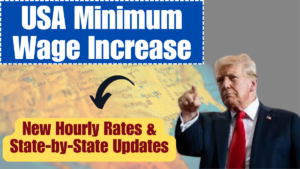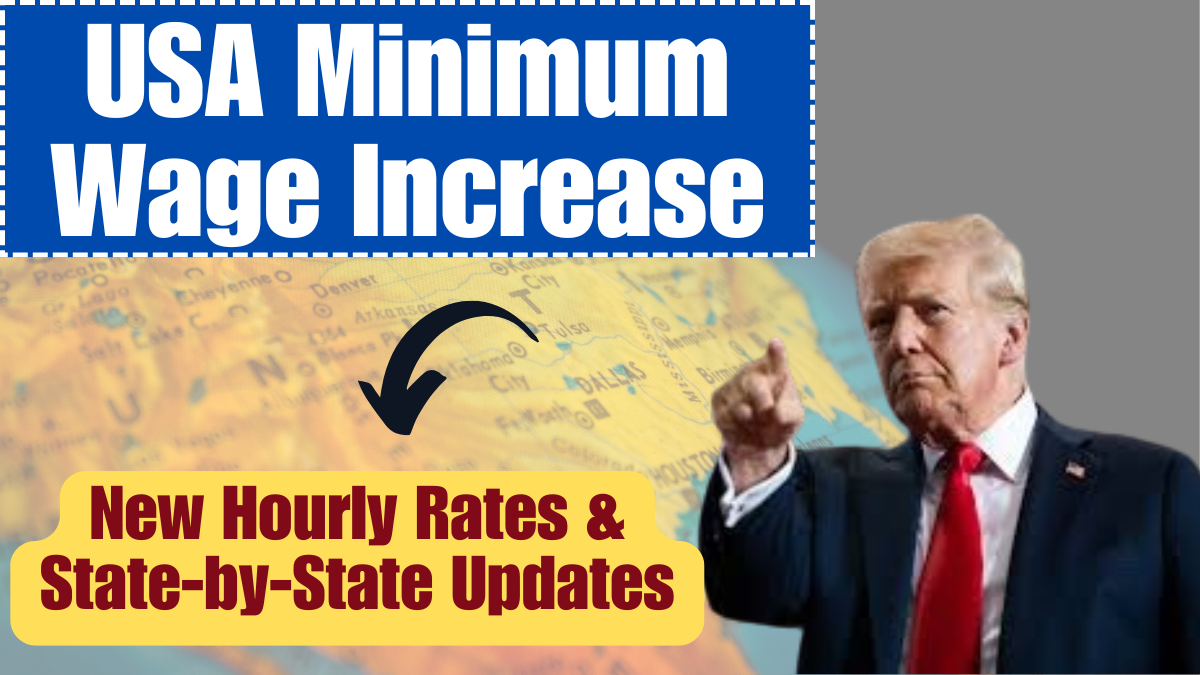As we step into April 2025, wage reforms across the United States continue to shape the labor market. While the federal minimum wage holds steady at $7.25 per hour—a rate unchanged since 2009—many states, cities, and counties have taken independent measures to increase local wage standards. These updates aim to counter inflation, balance economic disparities, and support a growing need for sustainable income.
From California’s historic bump for fast-food workers to state-wide changes in Florida and Illinois, these revisions are essential for workers and business owners alike. Whether you’re calculating your next paycheck or managing payrolls, staying informed about these shifts is crucial.

Why Are States Implementing Wage Increases?
The stagnation of the federal minimum wage has led individual states to act independently. Multiple factors contribute to the push for higher local wages:
-
Cost-of-Living Adjustments – States are aligning wages with regional living expenses.
-
Inflation-Linked Updates – Some wages are adjusted automatically using the Consumer Price Index (CPI).
-
Legislative & Ballot Initiatives – Laws and public votes often mandate wage hikes over time.
-
Advocacy Influence – Worker groups and economic researchers emphasize the need for livable wages.
This decentralized approach has created a diverse pay scale across the U.S., where some states are advancing faster than others in boosting worker compensation.
April 2025 Minimum Wage by State
Here’s a look at the updated 2025 hourly rates in major states, including special considerations for tipped employees:
| State | New Wage (2025) | Tipped Wage | Notable Change |
|---|---|---|---|
| California | $16.50/hr | No tip credit | Fast-food workers now earn $20.70/hr |
| Washington | $16.66/hr | No tip credit | Annual CPI-based adjustment |
| New York | $16.50/hr (NYC/LI/WC) | $11.00 | Adjusted with inflation |
| Connecticut | $16.35/hr | $6.38 (FS), $8.23 (bartenders) | Follows scheduled annual increases |
| Florida | $14.00/hr (Sep 30) | $11.00 | Set to reach $15/hr by 2026 |
| Illinois | $15.00/hr | $9.00 | Finalized its scheduled wage raise |
| Arizona | $14.70/hr | $11.70 | CPI-based wage update |
| Ohio | $10.70/hr | $5.35 | Updated annually based on inflation |
These revisions reflect a broader movement toward fair pay and better alignment with today’s cost of living.
Tipped Wage Policies Explained
Workers in the service sector—such as restaurant staff and bartenders—often rely on tips as a part of their income. Here’s how states differ:
-
States Without Tip Credit – In places like California and Washington, tipped employees earn the full state minimum wage regardless of gratuities.
-
States Allowing Tip Credit – Areas like Florida and Ohio let employers pay a reduced base rate if total earnings (wage + tips) meet the minimum wage requirement.
Service workers should routinely monitor their earnings to ensure their pay complies with state labor laws.
Who Gets the New Minimum Wage?
Not every worker is automatically eligible for the new rates. Wage qualifications can vary based on several factors:
-
Tipped Employees – Must earn a total income that meets the state’s minimum wage.
-
Young Employees (Under 20) – Some states allow lower “training wages” for the first 90 days of employment.
-
Small Business Workers – Employers with limited staff may qualify to pay reduced rates in certain states.
-
Seasonal or Agricultural Workers – Different wage rules may apply depending on the labor sector.
Eligibility details can be found through each state’s Department of Labor.
How Wage Hikes Help Employees
For employees across the country, the updated wages bring more than just larger paychecks. Benefits include:
-
Increased Earnings – Higher wages assist with covering essential costs like rent, food, and transport.
-
Stronger Job Satisfaction – Workers tend to feel more valued, resulting in better performance and retention.
-
Financial Security – Predictable income growth helps in budgeting and saving for future needs.
Employees relying on tips should ensure their total income adheres to their state’s wage laws.
Business Impacts of Minimum Wage Changes
For employers, particularly small businesses, the new wage mandates present both opportunities and challenges:
-
Rising Payroll Costs – Budget revisions may be necessary to meet higher pay standards.
-
Legal Requirements – Failing to comply can lead to fines, legal action, or payment of owed wages.
-
Hiring Advantages – Competitive wages may attract more skilled or loyal employees.
-
Operational Adjustments – Businesses might need to revise payroll systems, staff policies, and service pricing.
In some cases, employers may also face pressure to increase pay for experienced staff to maintain fair wage gaps, a phenomenon known as wage compression.
Click here to know more.
